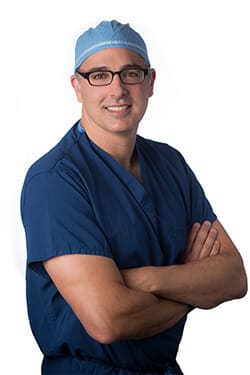Breast Implants 101: The Basics of What You Need to Know
Undergoing breast augmentation surgery is a significant undertaking — one that requires you, the patient, to gather pertinent information about breast implants. But, where do you begin looking? New York City plastic surgery provider Dr. Joshua Greenwald realizes that it is easy to feel overwhelmed with the sheer volume of information and personal opinion that exists on the subject. To help you navigate the sea of breast implant information, here is some basic information, a perfect place to start.
Breast Implants: Type
Dr. Greenwald offers two types of breast implants: saline and silicone. Saline breast implants are comprised of a silicone outer shell and a saline (i.e., sterile saltwater) solution filling. The main benefit of saline breast implants is that the body can absorb the filling solution naturally in case an implant ruptures.
Silicone breast implants have a silicone outer shell as well, but are filled with silicone gel rather than saline solution. Silicone implants more closely resemble the look and feel of natural breast tissue, making them a popular choice among patients. However, if silicone breast implants rupture, the body cannot absorb the filling material, which may stay intact inside the implant pocket. This can cause “silent rupture,” a condition in which the patient is unaware that an implant has ruptured. If you choose silicone implants, be sure to undergo breast imaging exams (i.e., an MRI or mammogram) every three years starting three years after your initial breast augmentation surgery to monitor breast health.
Breast Implants: Shape
Dr. Greenwald offers two shapes of breast implants: round and teardrop shaped. Round breast implants will give you the most lift, cleavage and fullness. On the other hand, teardrop-shaped breast implants look more like natural breasts.
Breast Implants: Texture
In addition to choosing either round or teardrop-shaped implants, you also have a choice between implants with a smooth or textured outer shell. Smooth breast implants move more freely within implant pockets. Textured breast implants tend to affix to overlying tissue, allowing them to stay higher up on the chest and counteract the effects of gravity over time.
Breast Implants: Placement Options
The New York City plastic surgeon offers two main breast implant placement options: subglandular and submuscular positioning.
Subglandular placement is also called “overs” placement because Dr. Greenwald positions the breast implants over the pectoral (chest) muscle and underneath the glandular (breast) tissue. Because the breast augmentation surgeon does not compromise the chest muscle in this approach, the postoperative recovery period is typically quicker and easier with this placement method.
Submuscular placement is also referred to as “unders” because the Manhattan plastic surgeon places implants under the chest muscle. This placement method is more invasive, thus requiring greater recovery time. However, many patients still opt for unders placement because it provides a more natural look, and may help those with thin skin or low body weight avoid visible implant rippling near the skin’s surface.
To schedule a personal consultation with Dr. Greenwald to learn more about breast augmentation surgery and the available breast implant options, please contact his practice by calling (914) 421-0113.
